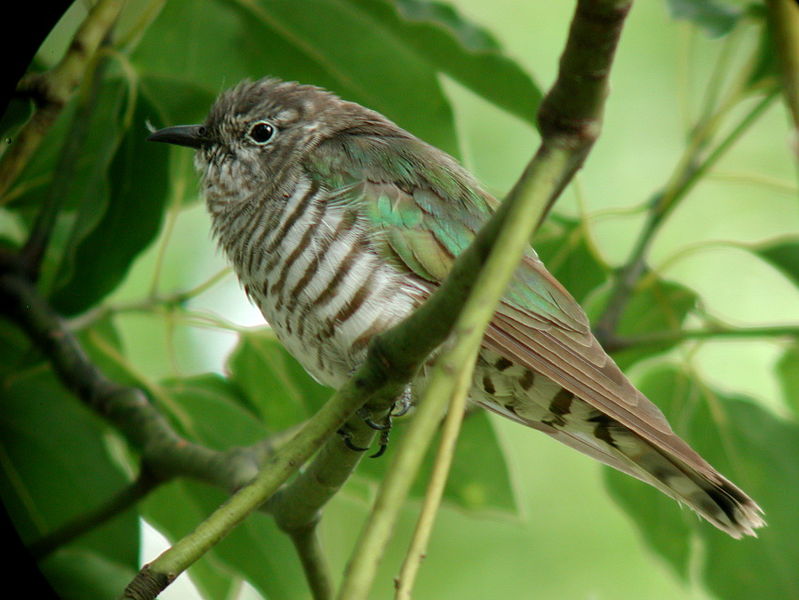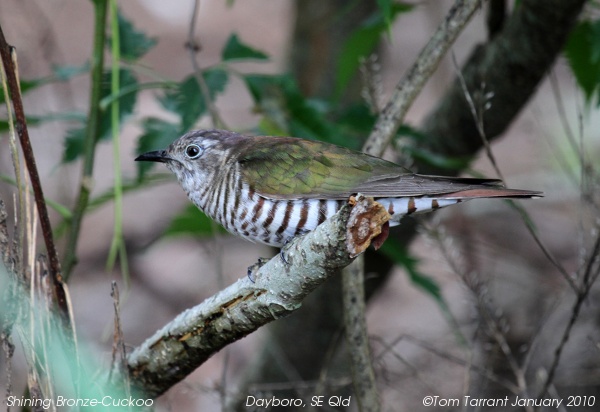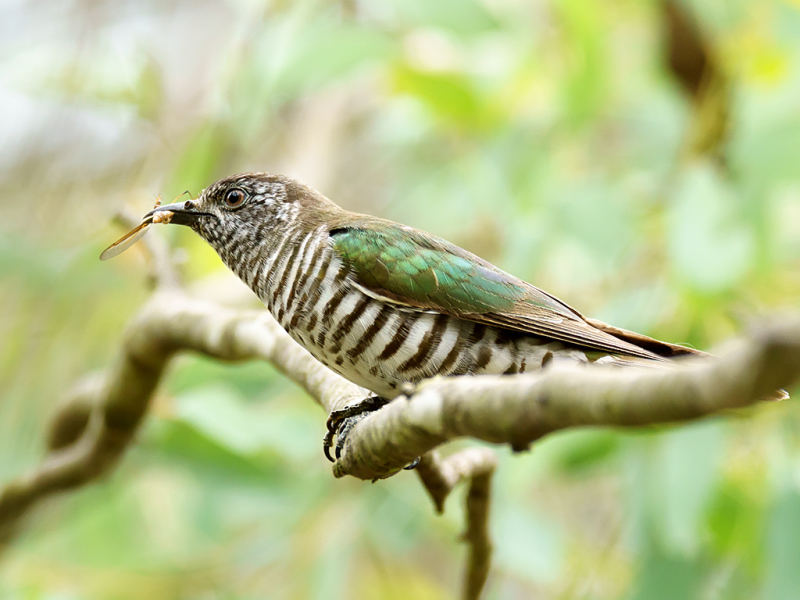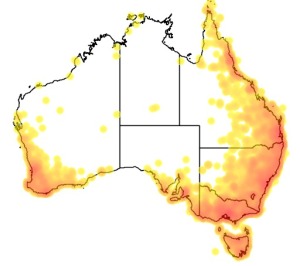Colours
Distinguishing features
Hard to spot and easier to hear, the Shining Bronze Cuckoo has metallic golden or coppery green upperparts and white cheeks and underparts barred with dark green. The female is similar with a more purplish sheen to the crown and nape and bronzer-tinged barring on the belly. The bill is black and the feet are black with yellow undersides. (Wikipedia)
Size
- From 17 cm to 18 cm (Length of specimen)
Wingspan
- From 25 cm to 32 cm
Synonyms
Distribution
Distribution and habitat preferences
It is found in Australia, Indonesia, New Caledonia, New Zealand, Papua New Guinea, Solomon Islands, and Vanuatu.
Local abundance
- Cape Kidnappers, New Zealand: common
Audio recordings
Recorded at Border Ranges National Park (near Border Ranges), New South Wales in Australia
© Marc Anderson
(source)
Behaviour
The female lays a single egg in a host nest and removes a host egg. After hatching, the baby cuckoo ejects the host nestlings from the nest. (Wikipedia)
Diet
Insectivorous, it eats insects that are avoided by other birds, such as caterpillars, particularly those of the magpie moth, and beetles, particularly ladybirds. The gizzard is lined with a soft thick lining which catches the caterpillar spines; these fall away and are spat out by the bird. (Wikipedia)




